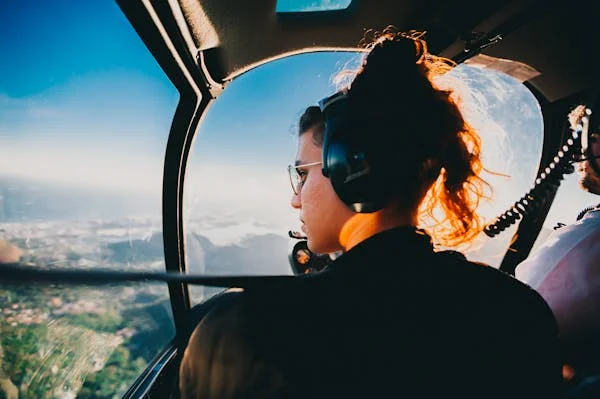Introduction
Traveling by air offers more than just a means of transportation; it’s an experience that often leaves passengers mesmerized. One of the most captivating aspects of flying is the view from an airplane window. Whether it’s the patterns of city lights at night, the sweeping vistas of mountain ranges, or the calmness of clouds below, this perspective offers a fresh lens through which to see the world. In this article, inspired by “View from an Airplane Window NYT”, we explore the charm, science, and cultural significance of this unique experience.
The Allure of the Airplane Window Seat
Passengers often gravitate toward window seats, not just for comfort but for the mesmerizing visuals they offer. For many, gazing out at the world during a flight provides a sense of wonder and inspiration that no other travel method can match.
Why Passengers Prefer Window Seats
The preference for window seats comes down to these key reasons:
- Unobstructed Views: Passengers get to witness the changing landscapes and skies without interruptions.
- Privacy and Comfort: It offers a personal nook away from the aisle traffic.
- Natural Entertainment: Watching the world unfold below is more engaging than a movie or book.
Psychological Impact of Aerial Views
Looking out the airplane window offers passengers a profound sense of perspective. From 35,000 feet, the usual worries of daily life seem insignificant compared to the grandeur of the Earth. This perspective often evokes feelings of calm, awe, and reflection.
A Changing Canvas: Views During a Flight
Each flight offers unique visuals depending on the geography, altitude, and time of day. The view is like a moving canvas, showcasing the Earth’s beauty in all its diversity.
Daytime Views
Flying during the day provides clear and detailed visuals of landscapes, including:
- Mountain Ranges: Snow-capped peaks, valleys, and winding rivers.
- Coastlines: Clear outlines of land meeting the sea.
- Urban Areas: Cities look like miniature models with roads and buildings neatly arranged.
Nighttime Views
Night flights transform cities into glowing grids of light, with highways, skyscrapers, and bridges illuminated in dazzling patterns. Iconic views include:
- The bright, bustling lights of New York City.
- The soft, ambient glow of rural towns in the distance.
The Science Behind the Airplane Window View
The view from an airplane window offers more than just aesthetic appeal. Scientific principles come into play, adding depth to what we see.
Why Do We See the Earth’s Curvature?
At cruising altitudes of over 35,000 feet, the Earth’s curvature becomes slightly visible. This occurs because of the high vantage point, allowing passengers to observe the horizon bending ever so slightly.
Changing Sky Colors
The sky seen from an airplane window often appears more vibrant and dynamic. This happens due to the scattering of sunlight at different altitudes.
- Sunrise and Sunset: The golden and red hues are more vivid due to the thinner atmosphere at higher altitudes.
- Cloud Shadows: Shadows of clouds cast on the Earth below create surreal patterns.
Capturing the Perfect Photo
Photographing the view from an airplane window can be challenging yet rewarding. With proper techniques, anyone can take stunning pictures during a flight.
Tips for Great Airplane Window Photos
- Choose the Right Seat: Book a window seat forward of the wing for the clearest views.
- Fly During Golden Hours: Flights scheduled during sunrise or sunset offer the best natural lighting.
- Use a Smartphone or Compact Camera: Keep it simple; high-end DSLRs are unnecessary.
- Avoid Window Reflections: Hold the camera close to the glass and angle it to minimize glare.
- Edit Lightly: Adjust brightness and contrast slightly to enhance colors without over-editing.
Views and Environmental Awareness
The view from an airplane window isn’t just beautiful—it’s also a lens through which passengers can witness the Earth’s changing environment.
Visible Signs of Environmental Changes
- Deforestation: Large patches of cleared land are evident in forested regions.
- Melting Glaciers: Polar and mountain regions show reduced ice coverage.
- Urban Sprawl: Expanding cities are visible through new developments and road networks.
Popular Airplane Routes for Scenic Views
Certain flight paths are known for offering the most spectacular views. Here’s a look at some must-see routes:
| Route | What You’ll See | Best Time to Fly |
| Los Angeles to San Francisco | California coastline, cliffs, and beaches | Morning |
| Sydney to Auckland | Tasman Sea, volcanic islands | Midday |
| Dubai to Cape Town | African coastline, mountain ranges | Sunset |
| Anchorage to Seattle | Glaciers, fjords, and rugged terrain | Daytime |
| London to Reykjavik | North Atlantic Ocean, volcanic landscapes | Sunrise |
Cultural Significance of Airplane Window Views
The view from an airplane window has been a source of inspiration in art, literature, and media for decades.
Art and Photography
Many photographers specialize in aerial photography, capturing unique angles of the Earth from airplane windows. These images have been featured in exhibitions, travel blogs, and even prominent publications like The New York Times.
Writing and Literature
The airplane window view has inspired travel writers to pen stories about human connection, nature, and the fleeting beauty of life. Writers often describe it as a moment of introspection, far removed from the chaos of the ground below.
Technical Aspects of Airplane Windows
While the view is enchanting, the airplane window itself is a marvel of engineering.
Oval-Shaped Windows
Airplane windows are oval or rounded for structural integrity. This design helps distribute the pressure evenly, reducing the likelihood of cracks.
Multi-Layered Windows
Airplane windows are made up of three layers:
- Outer Pane: Withstands external pressure and weather conditions.
- Middle Pane: Contains the bleed hole to regulate pressure.
- Inner Pane: Protects passengers from the cold temperatures outside.
Safety and Comfort Tips for Window Seat Travelers
While the view is a treat, sitting by the window requires a bit of preparation:
- Wear Comfortable Clothes: Window seats can be slightly cooler due to proximity to the wall.
- Use a Travel Pillow: Make long-haul flights more comfortable.
- Stay Hydrated: The altitude and enclosed space can dehydrate you quickly.
- Take Short Walks: Stretch your legs to avoid stiffness or discomfort.
Conclusion
The view from an airplane window NYT is more than just a fleeting moment of visual delight it’s an experience that connects us to the vastness of our planet. Whether you’re gazing at urban lights or natural wonders, this perspective offers a sense of awe and humility that few other experiences can match.
As you take your next flight, let the window seat transport you to a world of inspiration and introspection. Cherish the views, capture the memories, and let them remind you of the incredible beauty and fragility of the Earth.
FAQs
Why is the view from an airplane window so captivating?
The aerial view offers a unique perspective of landscapes, cities, and natural phenomena, creating an unforgettable visual experience.
What is the best time to fly for scenic views?
Sunrise and sunset flights provide the most breathtaking views, with vivid colors and softer lighting enhancing the scenery.
How can I take great photos from an airplane window?
Choose a window seat forward of the wing, minimize reflections by holding the camera close to the glass, and shoot during golden hours.
What are the environmental changes visible from a flight?
Passengers can observe deforestation, urban sprawl, and melting glaciers, highlighting the impact of human activity on the planet.
Why are airplane windows oval in shape?
Oval-shaped windows ensure even pressure distribution, reducing the risk of structural cracks and ensuring passenger safety.






